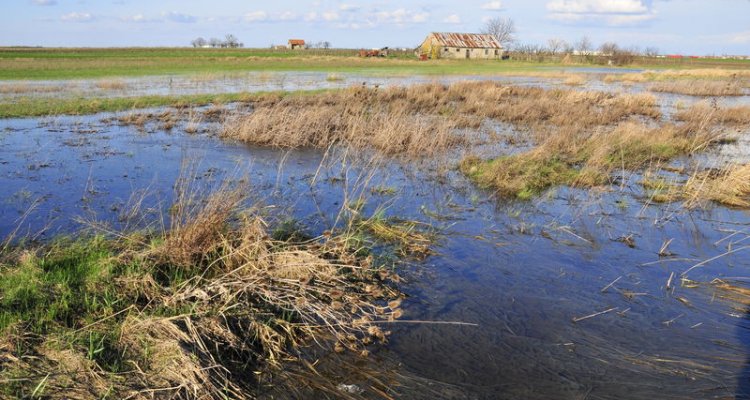
Green Circle deals with subsidence in Alblasserwaard
As a result of subsidence, the characteristic fen meadow landscape of Alblasserwaard has come under pressure. The same goes for the economic position of the farming community in the area. Six parties will join hands for a climate-proof future of this archetypal Dutch landscape, in which farmers find new ways to earn a living.
On 1 February 2019, Wageningen University & Research together with dairy factory De Graafstroom, the provincial authorities of South Holland, dairy cooperative Deltamilk, Rabobank and the Rivierenland Water board signed the covenant Groene cirkel Kaas en bodemdaling (Green Circle Cheese and Subsidence). Saskia Visser, Program Leader Sustainable land use of Wageningen Environmental Research, is involved in this Green Circle. ‘The Alblasserwaard project is grafted onto the Green Circle which was initiated some years ago together with Heineken. The underlying idea is that the province of South Holland together with a major market party will jointly take the initiative for sustainable development of the region. In Alblasserwaard, dairy factory De Graafstroom will be the economic flywheel in offering new business models to farmers and in increasing biodiversity in the region. Examples of this would be the development of an area-specific cheese for which regional dairy farmers supply the milk of cows which graze on herb-rich meadows.’
Area-specific solutions for subsidence
‘Subsidence is a serious issue’, Visser says. ‘For access to the fen meadow area, the water level is kept low. As a result of this, the soil will subside, the water level will be set even lower and the soil will subside again. Without intervention, we will remain in this downwards spiral and the soil will continue to subside. The risk of water damage and even flooding will then continue to increase. Level-controlled underwater drainage may stem subsidence substantially but will not solve this issue completely. Even custom solutions for specific plots are possible. A farmer could for example stimulate both pasturing and meadow birds on his land. If we still wish to live and work in Alblasserwaard in fifty to a hundred years, we have to work towards more area-specific solutions.’
Five themes
The Green Circle must propose these solutions. In addition to the six core team partners, another 24 parties, including the Dutch Ministry for Agriculture, have signed the covenant. Together, they will set up projects to address five themes: future business models, biodiversity, climate adaptation, water management and scientific developments. Wageningen University & Research as a core team partner will focus on the development and application of scientifically based knowledge. Project duration is three years, but Visser expects the covenant to be extended if significant progress is made in the meantime. ‘That is the stage we are in at this moment with the Green Circle around Heineken in Zoeterwoude.’
Doing nothing not an option
The common dream of all parties involved in the Green Circle is that the picturesque fen meadow area will still be there in fifty years. Visser: ‘There are also calls in the Netherlands for agricultural fen meadow areas to be completely returned to the natural environment. This will substantially reduce greenhouse gas emissions and subsidence will no longer be an issue, but then a unique part of the Netherlands will be history too.’
Visser thinks that doing nothing is not an option: ‘Not only because water management will then become unaffordable, but also because it will not be safe and certainly not sustainable for people and animals. We have to make other choices for the area. And the best way to do so, is to make these together with the parties in the region.’